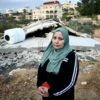Israel’s defence minister has laid out for the first time preliminary plans for the post-war administration of Gaza, saying neither Israel nor Hamas will rule the Palestinian territory after hostilities there conclude.
The plan for the “day after” the war was unveiled Thursday night on the eve of a trip to the region by US Secretary of State Antony Blinken, who is heading back to the Middle East for the fourth time since a Hamas attack on October 7 triggered the war in Gaza.
Questions over the future of the territory have been front of mind for many as calls mount for a ceasefire, with civilian deaths soaring and the UN warning of a humanitarian crisis that has left hundreds of thousands displaced and facing famine and disease.
An outline of the post-war plan by Defence Minister Yoav Gallant, shared with the press ahead of its submission to the country’s war cabinet, said “Hamas will not govern Gaza, (and) Israel will not govern Gaza’s civilians.
“Gaza residents are Palestinian, therefore Palestinian bodies will be in charge, with the condition that there will be no hostile actions or threats against the State of Israel,” it added.
Under the plan, which has not yet been adopted, Israel’s war in the territory will continue until it has secured the return of the hostages taken on October 7 and dismantled Hamas’s “military and governing capabilities”.
After that, the outline says, a new phase will begin during which local Palestinian bodies will assume the territory’s governance.
Israel launched its campaign to destroy Hamas after the group’s bloody October 7 attack, which resulted in the deaths of around 1,140 people, most of them civilians, according to an AFP tally based on official Israeli figures.
The militants also took around 250 hostages, 132 of whom remain in captivity, according to Israel.
The military’s relentless bombardment and ground invasion have reduced swathes of Gaza to rubble and claimed at least 22,438 lives, according to the territory’s Hamas-run health ministry.
– ‘No water, no electricity, no food’ –
On Thursday the army reported more strikes in and around Gaza City, now a largely devastated urban combat zone, and Khan Yunis, the biggest city in the territory’s south.
The army said it had killed Hamas fighters around Khan Yunis, struck “terrorist infrastructure” in the area and hit militants attempting to “place an explosive device near soldiers”.
It also said that an air strike in northern Gaza had killed the chief of operational staff for Islamic Jihad, a Palestinian militant group fighting alongside Hamas.
Displacements continued unabated, with AFP footage showing families arriving in the southern border city of Rafah in overloaded cars and on foot pushing handcarts stacked with bedding and other possessions.
“We fled Jabalia camp to Maan (in Khan Yunis) and now we are fleeing from Maan to Rafah,” said one woman who declined to give her name.
“They were shooting at us. (We have) no water, no electricity and no food.”
During his visit, Blinken will hold what threaten to be tough talks with Israeli leaders on “immediate measures to increase substantially humanitarian assistance to Gaza”, State Department spokesman Matthew Miller said.
“We don’t expect every conversation on this trip to be easy. There are obviously tough issues facing the region and difficult choices ahead,” Miller said.
UN human rights chief Volker Turk, meanwhile, said he was “very disturbed” by recent comments from two Israeli cabinet ministers who separately called for Palestinians to leave Gaza, raising fears of mass expulsions.
National Security Minister Itamar Ben-Gvir had also called for Israeli settlers to return to Gaza after the war, echoing similar comments by far-right Finance Minister Bezalel Smotrich.
But the post-war plan presented by Gallant on Thursday said that while Israel would reserve the right to operate inside the territory, there would be “no Israeli civilian presence in the Gaza Strip after the goals of the war have been achieved”.
– Regional tensions –
Israel’s war against Hamas has threatened to spill over into a wider regional conflict after a strike in Lebanon — widely assumed to have been carried out by Israel — killed Hamas deputy leader Saleh al-Aruri.
Aruri was killed on Tuesday in the south Beirut stronghold of the powerful Iran-backed Hezbollah movement, which has traded tit-for-tat fire across the border with Israel for months.
Hezbollah has vowed that the killing on its home turf will not go unpunished, and its leader Hassan Nasrallah warned Israel against all-out conflict after Israeli army chief Herzi Halevi said troops on the Lebanese border were “in very high readiness”.
The Shiite Muslim militant group said on Thursday another four of its fighters were killed overnight, raising its losses to 129 since the outbreak of border hostilities.
Defence Minister Gallant said on social media that Israel preferred “a political solution” to the border clashes, but that “the window of time for this is short”.
The Israeli government has been pushing for Hezbollah to withdraw from the border area.
Regional tensions were further inflamed after twin bomb blasts in Iran on Wednesday killed 84 people near the grave of Revolutionary Guards general Qasem Soleimani, who was killed in a US drone strike in Baghdad four years ago.
The Islamic State jihadist group claimed responsibility for the double-tap suicide bombings on Thursday, after Iran initially blamed Israel and the United States in the aftermath of the blasts.
burs-smw/mca














